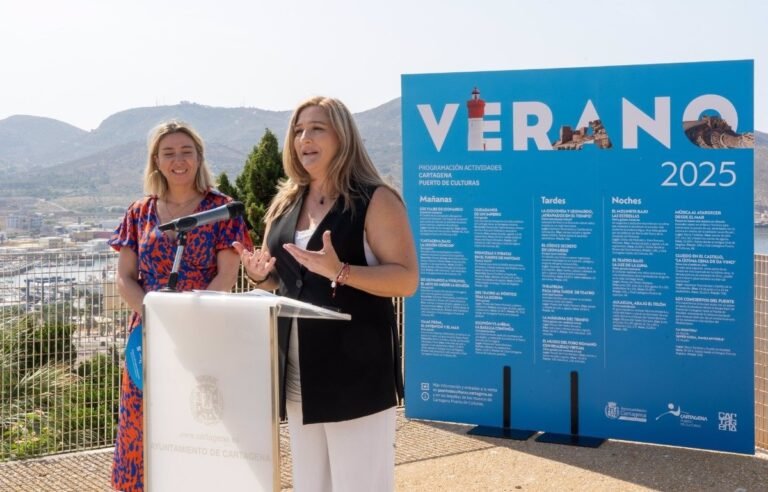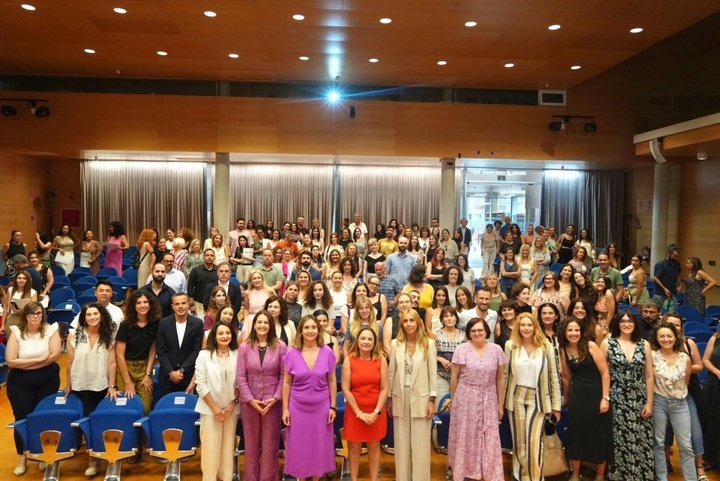
Noelia Arroyo highlights the need for growth of the port of Cartagena in the roundtable discussion on the future of Mediterranean municipalities, in which she participated alongside the mayors of Barcelona, Valencia, Malaga, and Palma de Mallorca
Wednesday, June 18, 2025 �|� Viewed: 187 times
�|�
Video�
Audio
�|�
Printable Version
The port of Cartagena must grow to join the other Mediterranean ports and turn Spain into a major European logistics platform, as defended by the mayor of Cartagena, Noelia Arroyo, in the roundtable discussion on the future of Mediterranean municipalities where she participated with the mayors of Barcelona, Valencia, Malaga, and Palma de Mallorca. Arroyo explained that Cartagena is working on its development by boosting its heritage and natural resources, as well as the city’s experience and talent in Defense technologies.
�
Arroyo warned that other countries are progressing with greater determination in the development of their logistics infrastructures and cited the example that the Moroccan port of Tangier-Med already handles more goods than Algeciras and Valencia ports combined. The mayor proposed that Spain take advantage of its position in international maritime routes, as maritime transport is essential in international trade, sustainable, and will become even more so with new technological developments.
�
The mayor advocates for the need for Cartagena to expand its port, a strategic infrastructure that currently lacks the support of the central government. Arroyo stated, «Cartagena should have the same right to contribute to the national logistics system.»
�
During the roundtable held within the scope of the Economic and Social Forum of the Mediterranean, organized in Malaga by Prensa Iberica, the mayor explained that cities should not grow by sacrificing their identity, but by leveraging the resources that shape their personality. In this regard, Arroyo explained that Cartagena’s future is based on quality tourism focused on its historical heritage and nature, as well as the naval industrial tradition. She mentioned efforts to capitalize on local knowledge, talent, and established companies in the Defense sector to foster a highly technified business ecosystem that develops dual-use technologies, both in Defense and civil applications.
�
Arroyo defended the continuity of the Tajo-Segura transfer, which she deems essential for the supply and irrigation of southeastern Spain. Planned cuts jeopardize the viability of the Cartagena region: «they pose a risk of desertification, threaten the population of towns, and present an environmental problem, as the transfer is responsible for 60% of regional agricultural production and over 45,000 direct jobs. Desalinated water is insufficient and much more expensive. Without the transfer, there will be more unemployment, more poverty, and more desertification,» she stated.
�
The mayor emphasized that the transfer not only has an economic impact but also an environmental one, as it helps combat land erosion and reduce emissions from desert expansion. «A cut based on ecological arguments can have negative consequences, especially on the environment,» she added.
�
During her speech, she also announced that Cartagena now has a municipal housing strategy that includes mobilizing public and private land, measures to facilitate permits, and enforcing the obligation to build on vacant lots, especially those owned by the State administration. «The SAREB should focus on building homes and not just on making money.»
�
Additionally, she raised concerns about the 2,000 empty homes with active utilities in Cartagena and advocated for incentives for owners to put them up for rent. «Many families are looking for homes while there are closed houses due to fears of renting out. We need to provide legal security and guarantees to property owners,» she noted.
�
The mayor explained that Cartagena remains an opportunity for tourism investors looking to contribute to a tourism development based on quality offerings, although she lamented that Cartagena still lacks high-speed rail connection and is now farther from Madrid than it was a century ago.
Return to list
�





